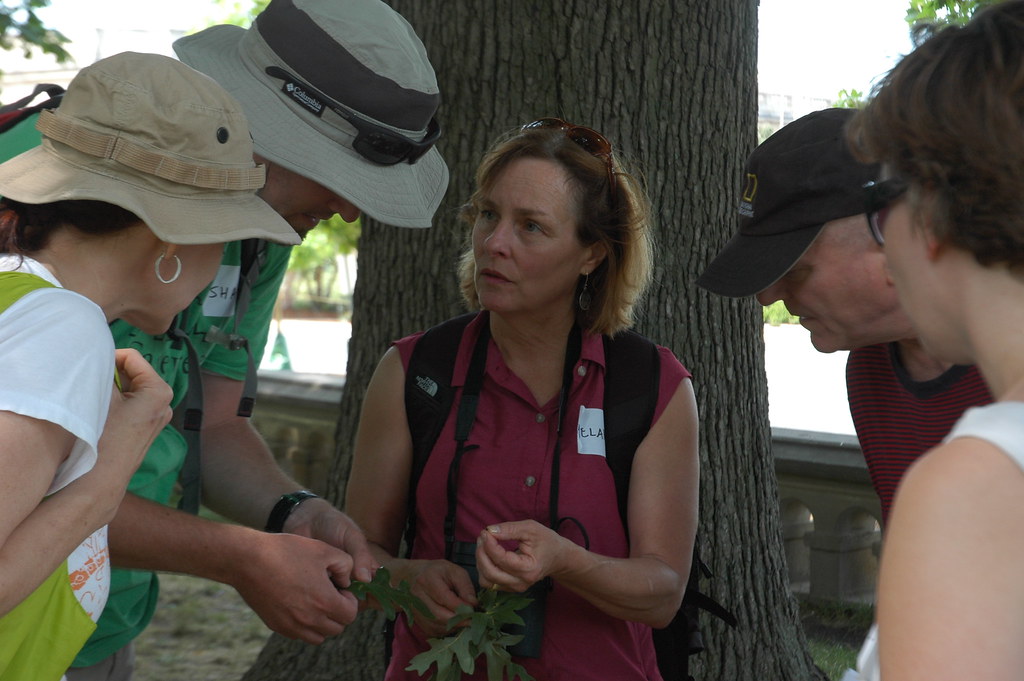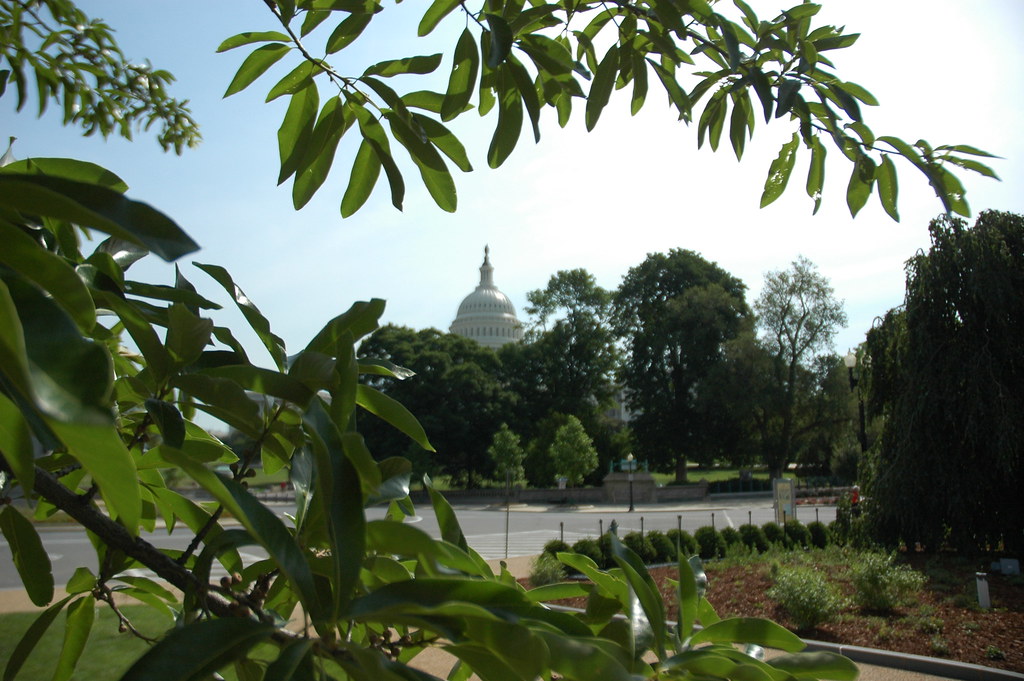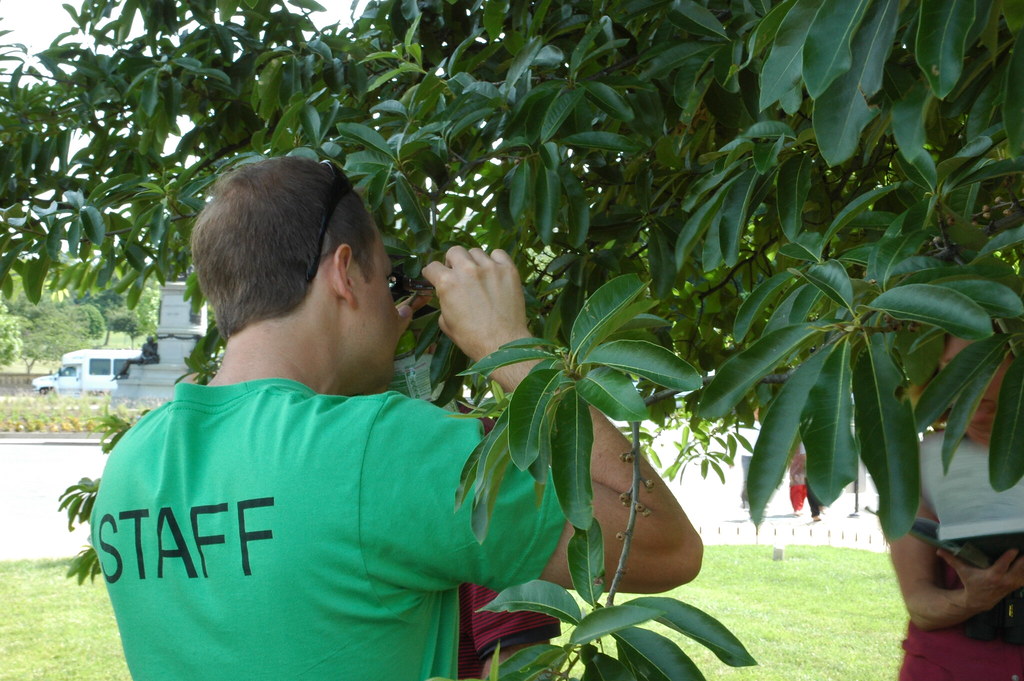 |
| Melanie Choukas-Bradley shows the group how a leaf can help identify a tree |
The walk began at the Botanic Gardens and ended with a contest to guess the size of a large willow oak tree (Quercus phellos) on the Capitol lawn. Along the way, Melanie introduced over 15 trees around the Capitol grounds. A wide range of tree types were represented, including native trees such as the Bur Oak (Quercus macrocarpa) and non-native trees such as the Silver Atlas Cedar (Cedrus atlantica). “D.C. is a great place to learn about non-native trees,” Melanie told the group. “You can travel to other places in the world and usually find a tree you’ll recognize.”
 |
| A view of the Capitol on the tree walk. |
Casey Trees' Urban Forestry Instructor Shawn Walker said the dedicated participants "could not get enough." So even though the walk was scheduled to end at noon, the group decided to stick around for an extra two hours to learn more about the history of the trees, their fruits, and ways to identify them. Melanie pointed out that though tree guide books can help identify species, the differing leaves and bark can get confusing. The only way to really hone your identifying skills is by exploring trees with an expert. And what better way to do that than participate in a tree walk?
 |
| Casey Trees' staff member Scott Brown inspects a shingle oak's budding acorns. View all the photos from this event on Flickr. |

No comments:
Post a Comment